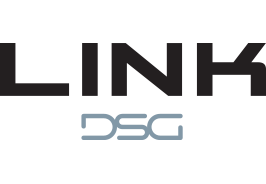There are several things to consider when choosing a custom printed wall covering. The good news is that there is a solution and a covering for any wall, inside or out. Beyond the environment, the other options you will have to consider are type of adhesion, installation technique, and the best material for the job.
Wall covering material can be fabric, paper, vinyl, or film. You will need to consider the environment (inside, outside, type of wall, size) to determine which material will be the best for your customer’s needs. There is an appeal to each material.
Adhesive choices include pressure-sensitive peel-and-stick options, or more traditional wallpaper paste. An experienced installer will be needed for both types, depending on the installer's knowledge of each material, the number of panels of media, or whether the wall presents any difficulties. I’m sure you’ve learned by now that an experienced installer is key to the success of any wall covering!
Where to Find What Material
Application and durability are leading factors in deciding an appropriate wall covering for a particular environment. Fabric is commonly used in indoor applications. Places where fabric is common are offices, restaurants, and studios. If the customer desires a more upscale look, fabric or paper would be more appropriate than vinyl or film.
Vinyl or film would be a more desirable product for the walls of a playroom or pediatrician’s office. Vinyl is typically found in commercial applications, including hospitality or retail, due to its durability and resistance to flame, stains, and scratches.
Making it Stick
When choosing an adhesive choice for a wall covering material, wallpaper paste and repositionable adhesive are the two most common options. The substrate type, whether fabric, vinyl, paper, or film, will play a role in which adhesive is used, in addition to a number of other considerations.
You will need to consider several things to make the right adhesive choice for each wall covering. Is it being used in a commercial or residential area? What is the required longevity and durability? Are there any environmental concerns? What is the removability characteristic? What is the preferred installation method?
Fabric wall coverings are typically paired with a repositionable, removable adhesive. A removable adhesive can greatly reduce the cost of installation because it creates a product that is very easy to install and remove if necessary.
Pressure-sensitive vinyl also uses a removable and repositionable adhesive, but also has permanent adhesive options. Variations of adhesive for vinyl application has continually evolved as the chemistry for paint commonly found on walls has evolved. However, vinyl with a scrim backing must use a traditional wall covering paste.
Paper-based wall coverings will also require a wall covering paste. Paper and vinyl requiring a paste, will need a premium quality, heavy duty, clear adhesive. Use of a mildew inhibitor in adhesive is also recommended.
Installation
Install experience levels vary for any application, and wall coverings are no exception. Adhesive, material, wall surface, and additional labor costs all need to be considered before deciding whether the job is for a beginner or an expert.
More skilled and experienced installers will need to be involved in jobs that require combined adhesives and materials. Also, if a job consists of large or multiple panels, a well skilled installer should be called.
The required experience level is actually more related to the size of the graphic, than the type of wall covering material. Generally speaking, smaller graphics are much easier to install than larger wall-to-wall graphics. Large wall-to-wall graphics will require seams to be aligned. Seams are important to consider. Butt seams versus overlap seams achieve different performance characteristics and require and understanding of which to use and when.
When choosing an installer, you can also consider thickness of product being used. As a general rule, thicker products are easier to install as they hide wall imperfections. Every wall has imperfections and when a smooth product is applied imperfections will be magnified.
The type of wall will play a role of choosing an installer. Rough walls with brick, stucco, or concrete are challenging. The installer will need to be familiar with proper heating and roller techniques.
Additional labor costs can arise during wall covering application. These costs can be associated with post-printing processes, such as laminating, top coating, or pre-installation conditions such as treating mold or mildew patches on walls.
Success
It is important to recognize just how vast the selection of wall covering media is. There are a number of combinations when it comes to material and adhesive to ensure success. Understanding material, adhesive, and where to use each option is essential to delivering a quality product. Comprehending your installers limits can help to avoid costly rework. Wall coverings are a worthwhile business, and knowing your facts makes it a rewarding business.





